A Look at Regulations, Terms, Equipment and How the Game Works
Ice hockey, one of the worlds fastest paced and most exciting games that marries speed, agility, skill (and how can we say, fighting?) is easy to follow once you have a basic understanding of the basic rules, terminology, equipment and practices. If you’re new to the game, also read up on our Top tips for New Hockey Players.
Playing Surface
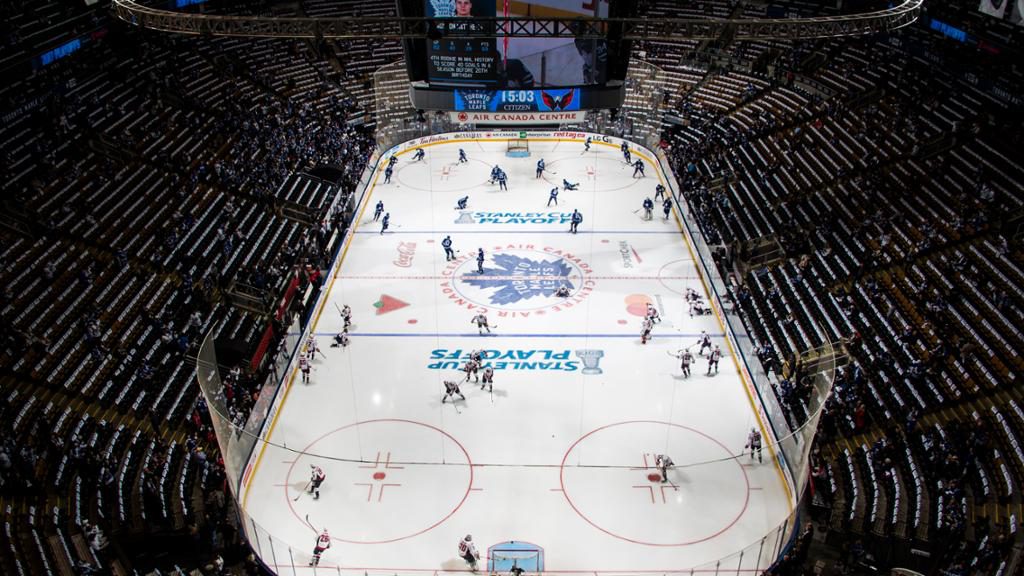
- The sheet of ice and room the ice is in is commonly known as the rink.
- The ice is divided into zones by a red line at centre ice and two blue lines.
- A North American rink measures 200 feet by 85 feet, European/International ice rinks are 197 feet by 98.5 feet (slightly wider than a North American rink)
- The ice is enclosed by boards and Plexiglas and usually netting to protect spectators.
Zones
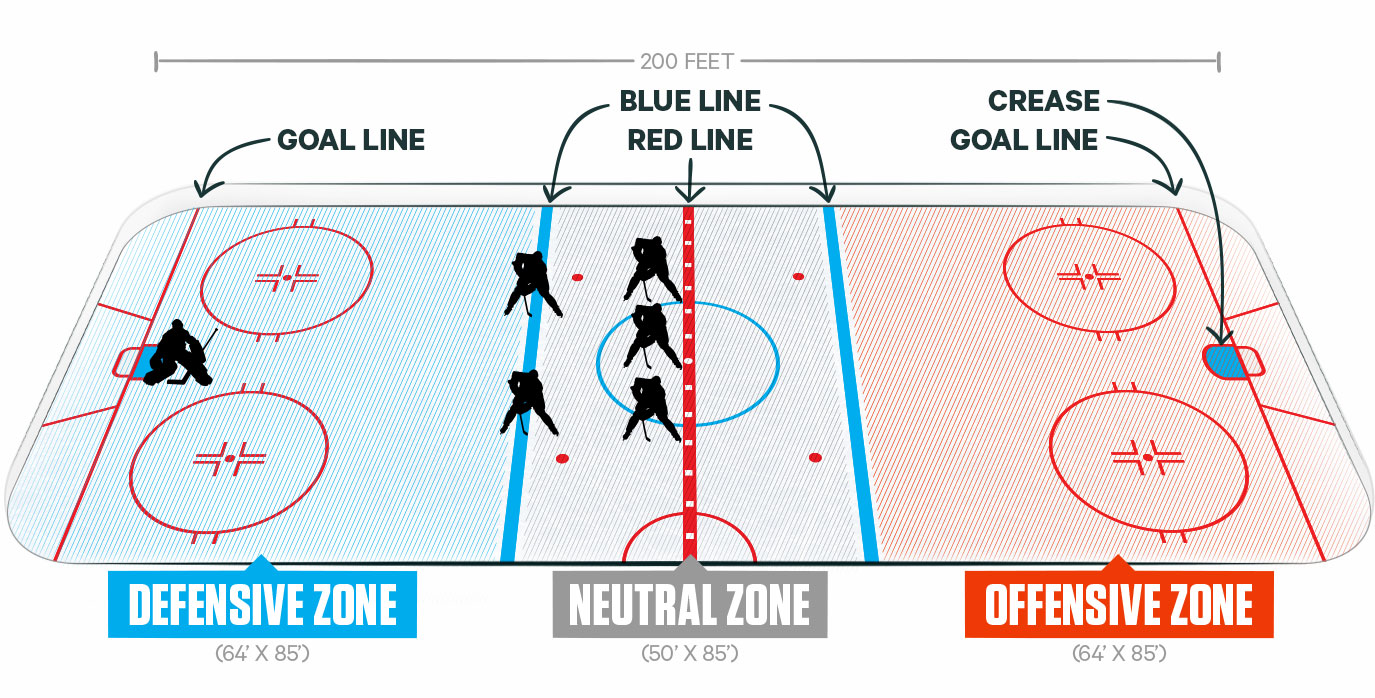
- The ice surface is divided into three main zones.
- The area where the goal is located is the “defending zone” for the team defending that net.
- The middle of the rink, between two blue lines, is the “neutral zone.”
- The area where the opposing goal is located is the “attacking zone” or “offensive zone.”
Puck
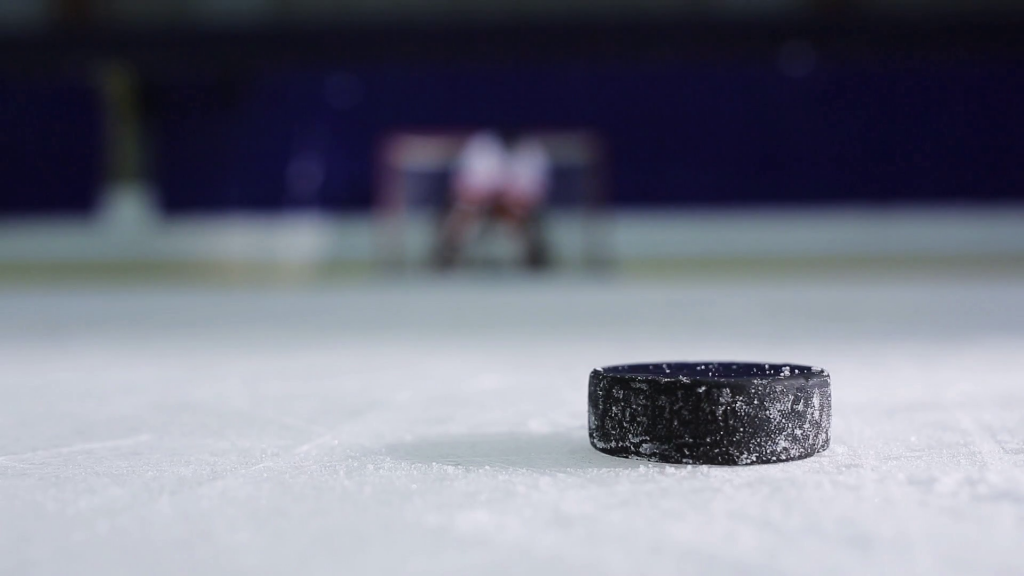
- An ice hockey puck is made of black, vulcanized rubber – there are also blue pucks which are lighter weight and usually used for child practices, and a heavier orange or red puck, used in adult training practices
- A standard black regulation puck is 1 inch thick and 3 inches in diameter and weighs between 5.5 and 6 ounces.
- The puck can be moved with the hockey stick or the feet, but picking it up with the hands is illegal.
Hockey Stick

- A stick is held by each player and used to retrieve, control, carry, pass and shoot the puck – it is usually made of either a carbon/graphite composite, fibreglass, aluminium or wood.
- Goals are scored by using the stick to shoot the puck into the opponent’s net.
- A shot that inadvertently deflects into the net off another player’s body is allowed to stand as a goal as long as there is no motion by the player to guide the puck into the net
Net

- A cage measuring 4 feet tall and 6 feet wide, strung with nylon mesh in the back and steel posts painted red.
- There are two nets at opposite ends of the ice, each guarded by a goaltender.
Object of the Game

- The object of the game is to simply score more goals than the opposition, usually they are in the low numbers unlike Basketball
Teams
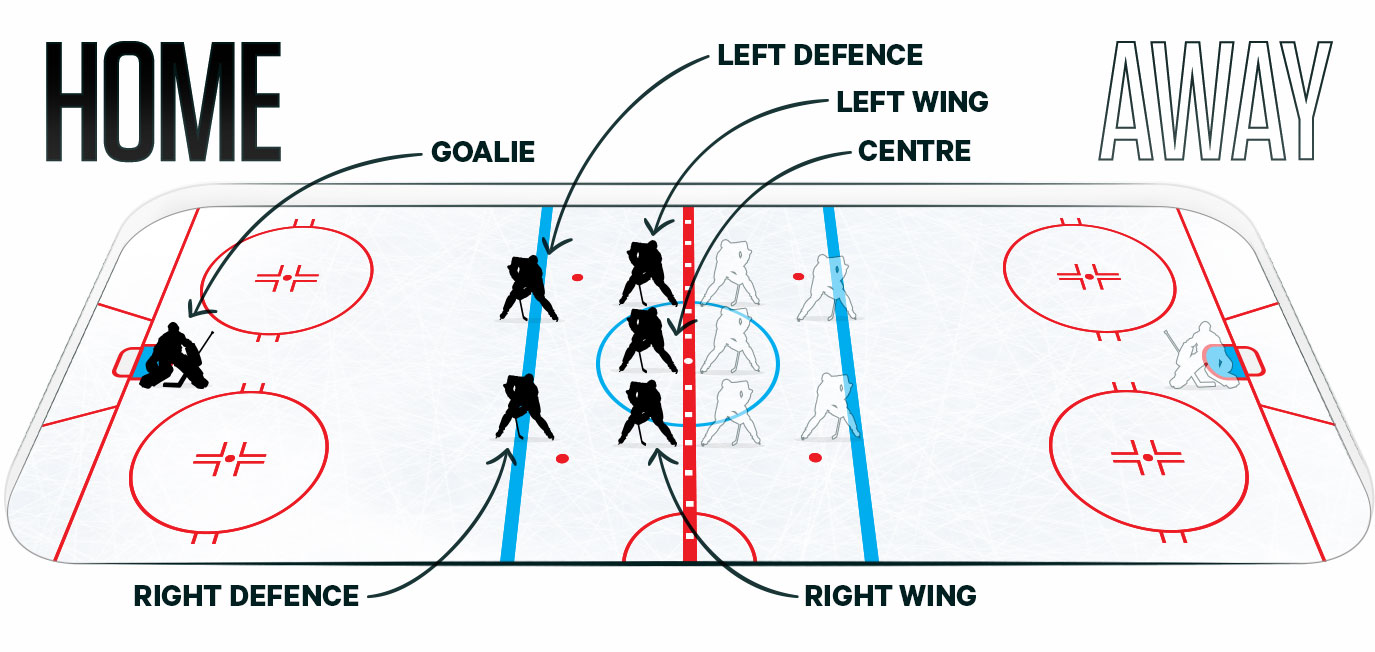
- Each team has six skaters on the ice, one goaltender and five players.
- The five skaters have assigned positions: three forwards and two defensemen. With forwards having 3 positions, Left Wing, Right Wing and Centre. Defensemen have 2 positions Left and Right.
- Regardless of assigned positions, all players except the goaltender can go anywhere on the ice.
- The goaltender cannot cross the centre ice red line that divides the rink in half, in NHL rules, the goal-tender cannot play the puck in the left or right defensive zones behind the goal line.
Substitutions
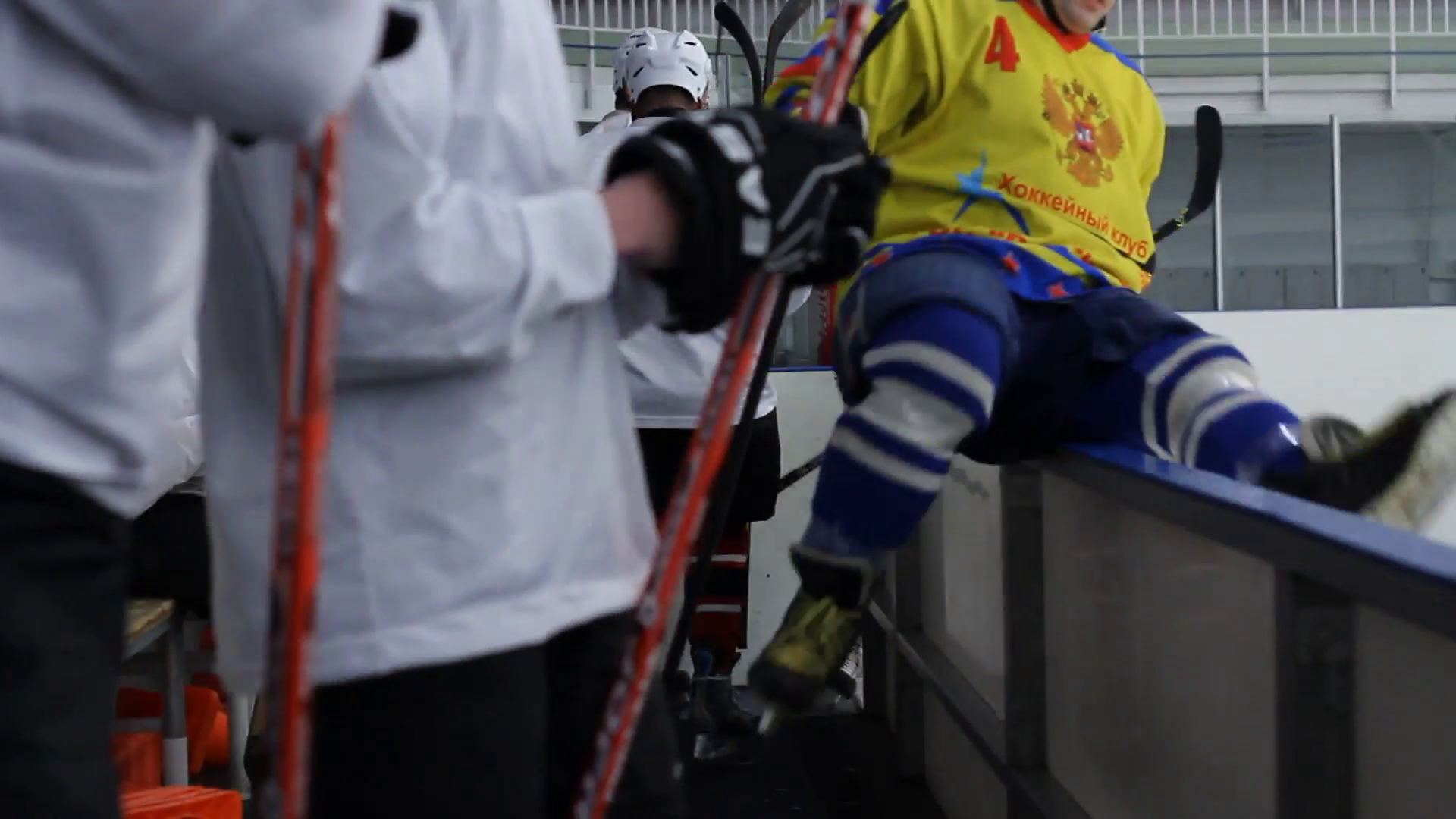
- Substitutions are unlimited and can be made at any time during the game unless defined by league rules during overtime play (when scores are even at the end of regulation time). They can jump over the boards, or go through the gate.
- A substitution does not require an official’s permission or a stoppage in play.
- A player can join the game “on the fly” — during the flow of play — as long as he is within 5-10 feet of the bench and not involved in the play or with an opponent. If a player jumps on and there are more than 6 players on the ice – a referee will call “Too many men” and a bench-minor penalty (usually 2 minutes) applies.
Faceoff
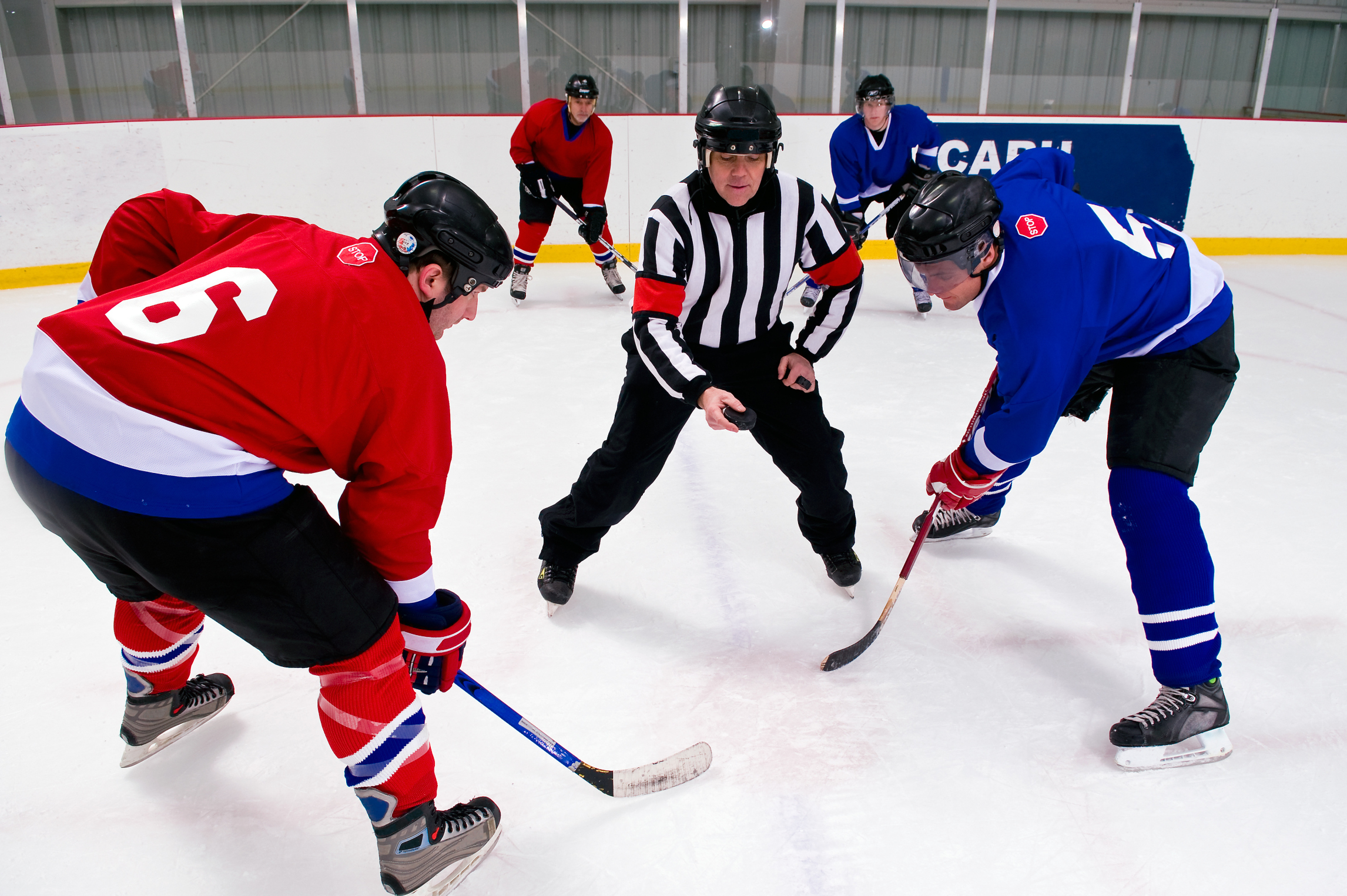
- Originally this was called the Puck-Off, (which we prefer but was changed!)
- The game begins when the referee drops the puck, at the centre dot, between two opposing forwards (usually the Centres).
- During the face-off, each teams players are positioned on their side of the defensive zone.
- The face-off is used to resume play following any stoppage in the game and is played from the nearest of the nice dots to the infraction, or at the start of each period, the centre dot.
- There are nine designated faceoff spots painted on the ice. 2 spots are inside a teams defensive zone, 2 are just outside the zone (and mainly used when an off-side occurs), a centre dot, and the 4 mirrored dots in the offensive zone.
Game Clock
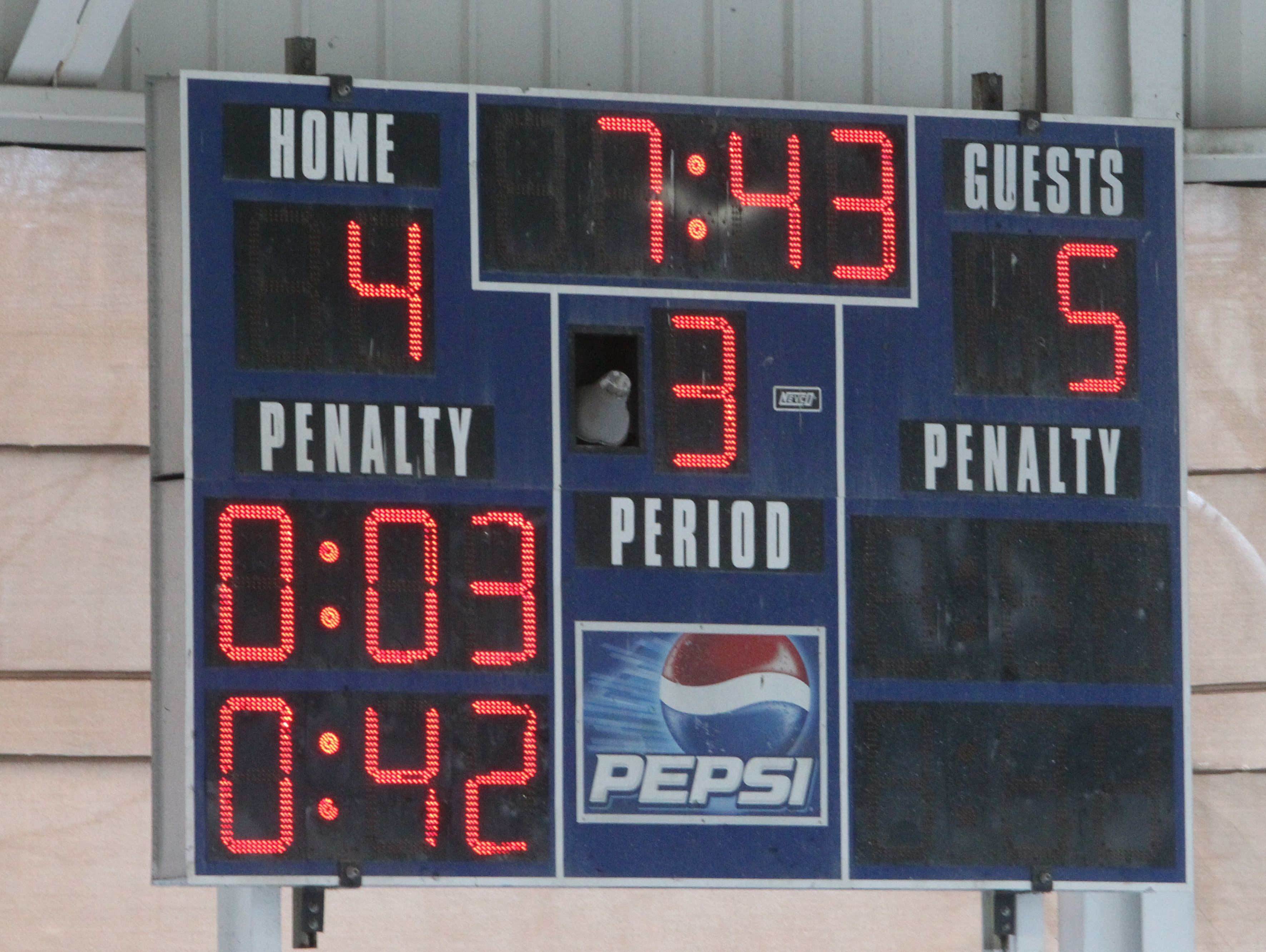
- The game is played in three 20-minute periods, unless specifically changed by the league the team is in. Sometimes in recreation leagues it can be 3 15-minute periods or 2 20-minute periods.
- The clock is stopped during all stoppages in play. In recreation leagues then clocks may continue to run if the league decides or if there is only 1 referee.
Body-checking
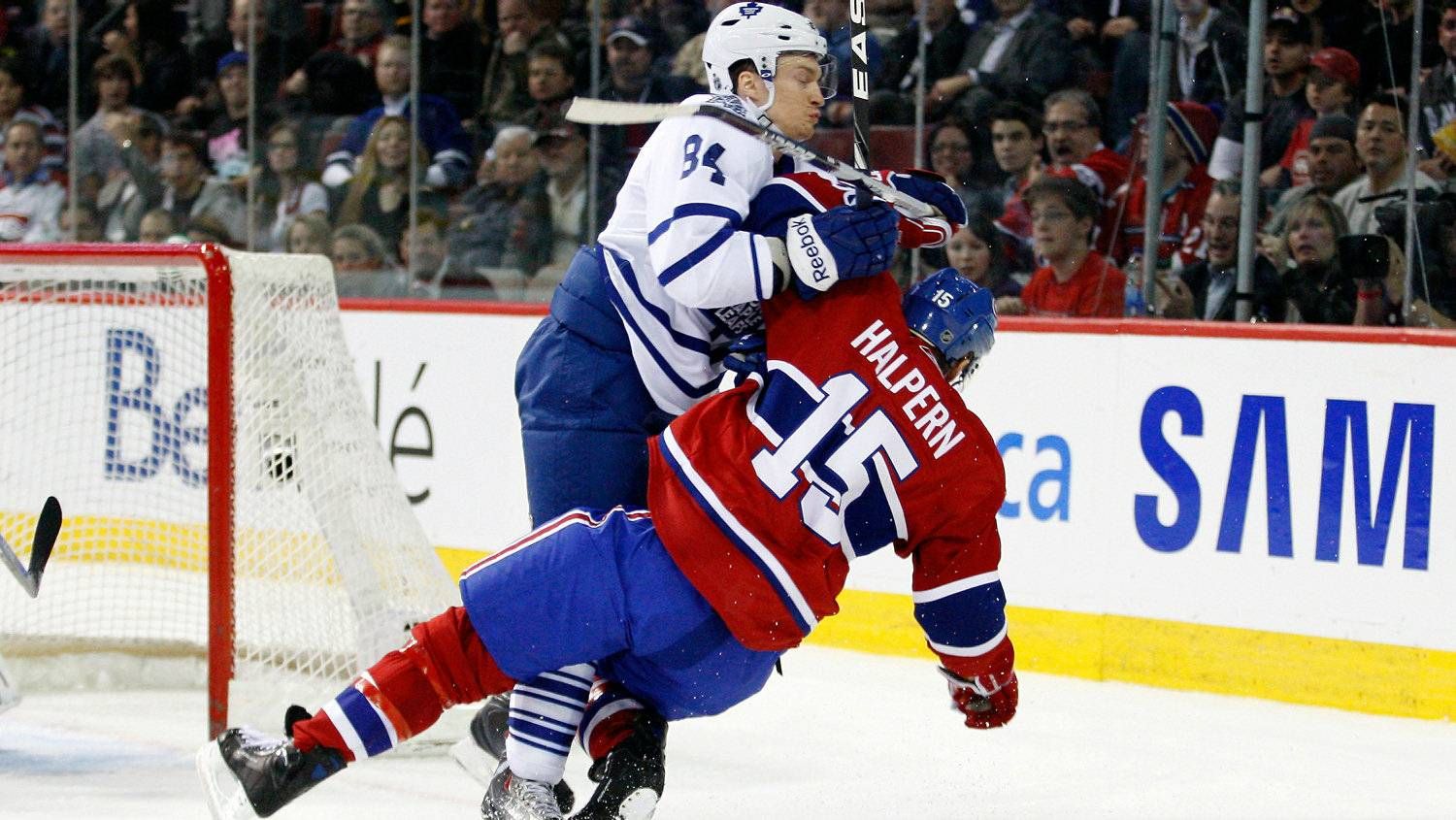
- In a ‘checking league’ (a league where body-checking is allowed), a skater can use a shoulder, hip or torso to hit or impede an opponent, but only when the opponent is in possession of the puck.
- A body-check that targets the head is illegal.
- A body-check to an opponent’s back is illegal if the opponent is facing the boards.
- Body-checking in the offensive zone, with the intention of gaining control of the puck and setting up a scoring opportunity, is called fore-checking.
Minor Penalties
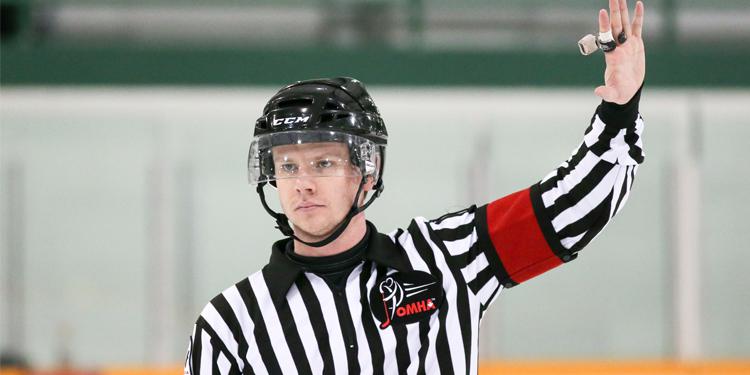
The difference between a legal check and a penalty is often open to interpretation and remains a source of dispute among fans, players and officials.
- A player charged with a minor penalty is sent off the ice for two minutes, usually to a specific penalty box, no substitution is allowed.
- The penalty ends immediately if a goal is scored by the opposing team, the player is allowed out of the box to return to play, or to the bench.
Minor penalties are called for obstructing an opponent. Infractions include:
- Tripping (with the stick or knee)
- Holding (with stick or hands)
- Hooking (with stick)
- Interference (checking or impeding a player without the puck)
Penalties are called for dangerous and improper use of the stick, including:
- Slashing
- Spearing
- High-sticking (hitting an opponent in the head or face)
- Cross-checking (hitting an opponent with the shaft of the stick)
Penalties are called for dangerous physical fouls, including:
- Elbowing
- Checking from behind
- Kneeing
- Roughing (usually involving a wrestling or shoving match)
Some recreation leagues make players wait until the box until the whistle is blown after their time is up, or are sent off for 2 minutes with the player being allowed back on the ice at the end of that time – local rules are defined by the league and is dependant upon specific safety concerns and rule modifications of the specific league.
Major Penalties

- A player charged with a major penalty is sent off the ice for five minutes.
- The most common major penalty is for fighting. If both fighters receive five-minute penalties, substitutions can be made.
- At the referee’s discretion, an infraction commonly deemed a minor penalty can be increased to a major. This usually occurs if an opponent has been seriously injured or if the referee believes there was a deliberate attempt to injure.
- A player charged with a major penalty involving serious injury or attempt to injure is ejected from the game.
- If a penalized player is ejected, a teammate is assigned to serve his major penalty. No substitution is allowed.
